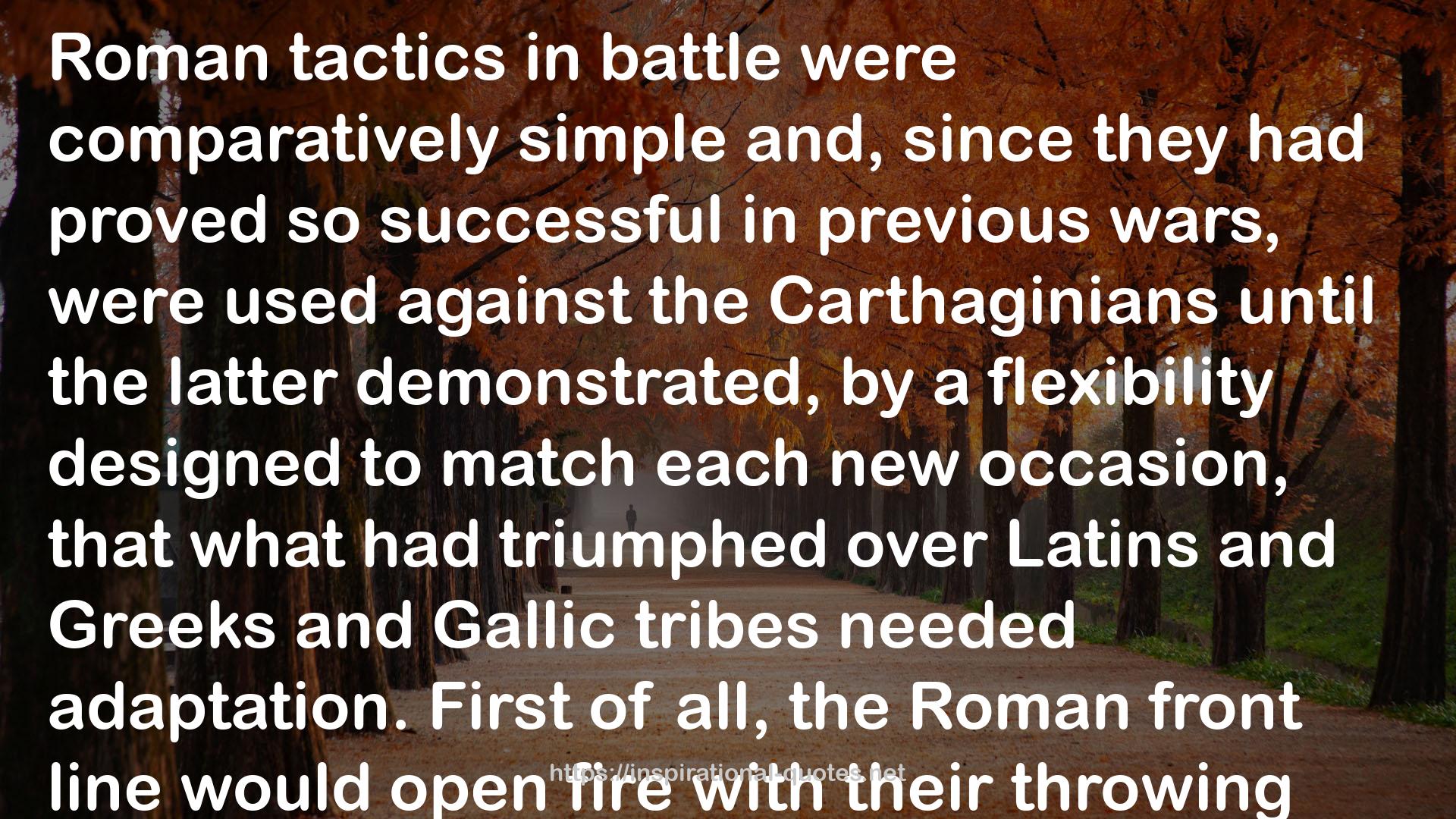" Roman tactics in battle were comparatively simple and, since they had proved so successful in previous wars, were used against the Carthaginians until the latter demonstrated, by a flexibility designed to match each new occasion, that what had triumphed over Latins and Greeks and Gallic tribes needed adaptation. First of all, the Roman front line would open fire with their throwing spears, following this up with a charge with their swords—somewhat akin to the musket volley and bayonet charge of later wars. If this failed to break the enemy front, the second line, passing through the first on their chess-board principle, would repeat the procedure. The veterans held as reserve could then be used if necessary, while all the time the lightly-armed infantry were skirmishing on the flanks of the enemy, aided by the cavalry. These tactics had served the Romans well in the past—and were to do so in the future—but proved inadequate to deal with a general who modified his own tactics to suit each new battlefield, and who used elements of surprise and carefully laid traps, into which the Romans more often than not were prone to blunder. "
― Ernle Bradford , Hannibal (Military Library)
